Ship Shape Recommended Reading
With all the craziness surrounding us during this time, we love to think about distractions when it comes to boats and design challenges. Many of you know there’s tons of reading in the marine section of bookstores, but we thought we’d curate a few notable titles for you if you’re thinking what to read next. Some of these books have been helpful either personally or in our process; others have been laughable and entertaining. Either way, if you think about supporting your local bookstore, please use the publishing information below to help you place your orders
Here’s looking towards warmer days, fair winds and quality time.
For the technical interest:
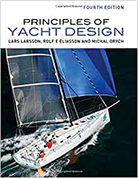
Principles of Yacht Design: Larsson and Eliasson
• Publisher: International Marine/Ragged Mountain Press; 4 edition (January 3, 2014)
• Language: English
• ISBN-10: 0071826408
• ISBN-13: 978-0071826402
The title remains one of the more serious books for professionals and boat owners alike. Covering the more technical aspects in the design and engineering of sailing craft, Principles in Yacht Design has become one of our favorite go to resources to provide engineering data or that quick reference for performance parameters.
The Elements of Boat Strength: Dave Gerr
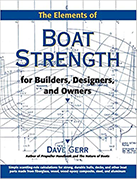
• Publisher: International Marine/Ragged Mountain Press; 1 edition (August 10, 1999)
• Language: English
• ISBN-10: 0070231591
• ISBN-13: 978-0070231597
Dave Gerr is a respected naval architect and his book is most notable for providing solid thumb rules for calculating dimensions and scantlings of parts and pieces, hull structure, rig components and machinery applications. His explorations in materials ranging from composite fiber to wood, and from wood composite to metal construction, are in-depth and accessible for all who take interest in learning more about the techniques and processes for building marine vessels.
Elements of Yacht Design: Norman Skene
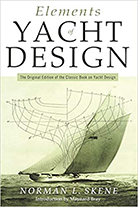
• Publisher: Sheridan House; New Ed edition (September 1, 2001)
• Language: English
• ISBN-10: 1574091344
• ISBN-13: 978-1574091342
Perhaps Skene is now considered the godfather of modern yacht design, his book was first published over 100 years ago. This is a classic, and a truly solid resource for many professionals. His concept yacht “Pipe Dream” provides a studied and timeless illustration for what the design cycle of a yacht looks like. Despite its dated glory, the book is a must-have in any serious marine library.
Sailing Interest:
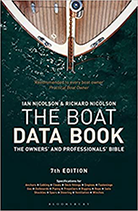
The Boat Data Book: Nicolson and Nicolson
• Publisher: Adlard Coles; 7 edition (December 23, 2014)
• Language: English
• ISBN-10: 1472907973
• ISBN-13: 978-1472907974
This is a unique book for the marina owner, the curious customer, the shop foreman, or the dreamer. Full of information, the book is brimming with everything from useful tips to hard data.
Heavy Weather Sailing: Bruce and Knox-Johnson
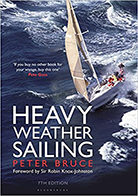
• Publisher: Adlard Coles; 7 edition (August 30, 2016)
• Language: English
• ISBN-10: 1472923197
• ISBN-13: 978-1472923196
This book has basically been considered an institution since its publication. A very thoughtfully organized volume that illustrates techniques and strategies for sailing in heavy weather and surviving storms at sea aboard sailing and motor craft.
Classics– fun but outdated and of dubious technical value!
The Common Sense of Yacht Design: L. Francis Herreshoff
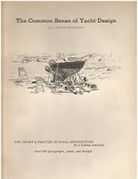
• Publisher: Caravan Maritime books, 1974 (two vols combined as one)
• Language: English
• ISBN-10: 0917368010
• ISBN-13: 9780917368011
Sensible Cruising Designs: L. Francis Herreshoff
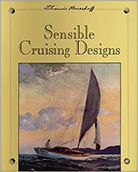
• Publisher: International Marine/Ragged Mountain Press; 1 edition (January 1, 1991)
• Language: English
• ISBN-10: 0070283648
• ISBN-13: 978-0070283640
Francis Herreshoff was the black-sheep son of the great N. G. Herreshoff of Herreshoff Manufacturing Co. fame. His fraught relationship with his father is the unspoken backstory to much of the design philosophy that comes through on the pages of these two classics– seeking distance and distinction from the long shadow of NGH, while eager for parental approval. Francis battled between his love of extreme simplicity and his attraction for highly engineered and sophisticated design, and the results are startling and entertaining. These books also feature some of the most breathtakingly artistic drafting you’ll ever see– most done with India ink on linen. Hard to imagine in our cut/paste/delete world.
American Small Sailing Craft: Howard I. Chapelle
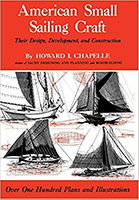
• Publisher: W. W. Norton & Company; Later prt. edition (December 17, 1951)
• Language: English
• ISBN-10: 0393031438
• ISBN-13: 978-0393031430
Howard Chapelle was self-taught as a marine designer and boatbuilder. His most notable contribution to maritime history was as a member of the Historic American Merchant Marine Survey, a WPA program that employed out-of-work designers during the Depression, seeking, measuring and documenting decaying and disappearing working craft of the US waterfront scene. American Small Sailing Craft is a distillation of that collection, putting together in a single place the lines and construction drawings of hundreds of traditional small working craft from the mid-1800’s through the early 20th century. There’s plenty of fodder here for the traditionalist dreamer, who wants to sail into the sunset aboard a simple classic built of little more than wood, a few metal fasteners, hemp and canvas.
Off topic and fun:
What If?: Serious Scientific Answers to Absurd Hypothetical Questions: Munroe

• Publisher: Houghton Mifflin Harcourt; First Edition edition (September 2, 2014)
• Language: English
• ISBN-10: 0544272994
• ISBN-13: 978-0544272996
This book has brought us much pleasure for our entire family. It is witty, it is serious, and it is completely absurd. What a great diversion for giving us something to think about that relates to real data and science applied to unreal situations. Fantastic voyage of math and comedy, both.
To Engineer is Human: the Role of Failure in Successful Design: Henry Petroski
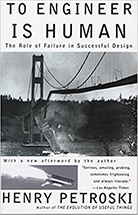
• Publisher: Vintage (March 31, 1992)
• Language: English
• ISBN-10: 0679734163
• ISBN-13: 978-0679734161
Henry Petroski has written about design challenges as diverse as rockets and toothpicks, and his personable and incisive study of how engineering works is both light entertainment and deep philosophy. Collapsing hotel walkways, wriggling suspension bridges, etc. His basic thesis is that behind every design success is a string of failures– some tiny, some colossal.